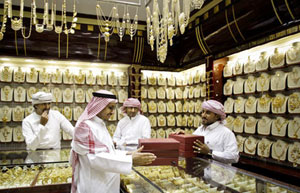Most luxury brands faced a crisis last year as sales growth in the Chinese market slowed down or even declined. The situation was aggravated as a result of a series of initiatives by the Chinese government to counter corruption and limit spending of public funds.
The trend has been evident since the second half of 2012, resulting in sales of watches, wine and luxury cars falling to such levels that affected the entire luxury goods industry. During Spring Festival this year, more luxury brands were clearly affected.
The market has maintained a decade of growth, thanks to the rising wealth of Chinese consumers. The explosive growth in the consumption of luxury goods was powered by two types of customers, one is the nouveau riche and the other is a number of high-ranking officials who evolved into super customers chasing the most expensive but not necessarily the best quality goods.
It is because of such demand that operators of luxury brands have an irrational idea about the Chinese consumer - they think even if there is no quality service or favorable customer experience, the Chinese are still willing to buy their products.
It may look as if the limits on public spending and the government's anti-graft drive have suppressed demand, but the real reason is that growth has not been based on a stable and loyal customer base secured by quality products, services and experiences.
If there were a normal and stable customer base, sales would not be affected so drastically. Continued growth in the Chinese market has covered up a lot of problems. For operators of luxury brands, addressing and resolving brand issues is essential to their development.
Luxury brands face a common problem in several areas.
First, they have to deal with a huge pricing disparity between the Chinese and the European or US markets.
From the beginning, almost all brands have employed a skimming pricing strategy, which means to charge high prices initially. High tariffs and initial operating costs are important factors, but more importantly the luxury market in China had all the conditions to implement skimming.
However, as the Chinese luxury market matured, the more than 50 percent or even 100 percent higher pricing in China than in Europe hurt its development.
The questions they faced included whether to maintain high profits or earn greater market share. What kind of chain reaction would lowering prices have? If price is lowered, would Chinese buyers still buy in Europe? Why can't they maintain high pricing in China like in South Korea and Japan? What would that mean for high-priced Asian markets? Would it affect the brand image, leading to the loss of customer base? With all these questions and doubts, luxury brand operators chose to not to act.
Pricing issues must be addressed because the high-price strategy will not work in the long run. If they really want to win the Chinese market, and to have a strong brand reputation and loyal consumers, fair treatment is one of the most basic conditions.
Second, they are faced with resolving the conflict between the conservative distribution of stores and the need to make it convenient for customers to shop.
In Europe and the United States, the density of luxury stores is far higher than in China. Given China's huge population size and landmass, the sales distribution networks are inadequate.
 |
 |
| Top 10 consumers of gold in the world | World's most expensive Doraemon staging in Wuhan |
